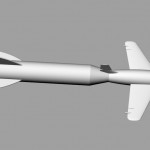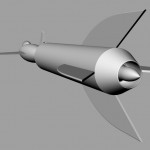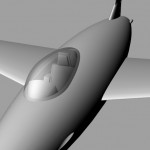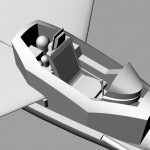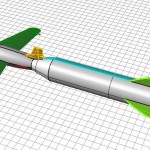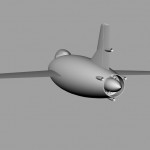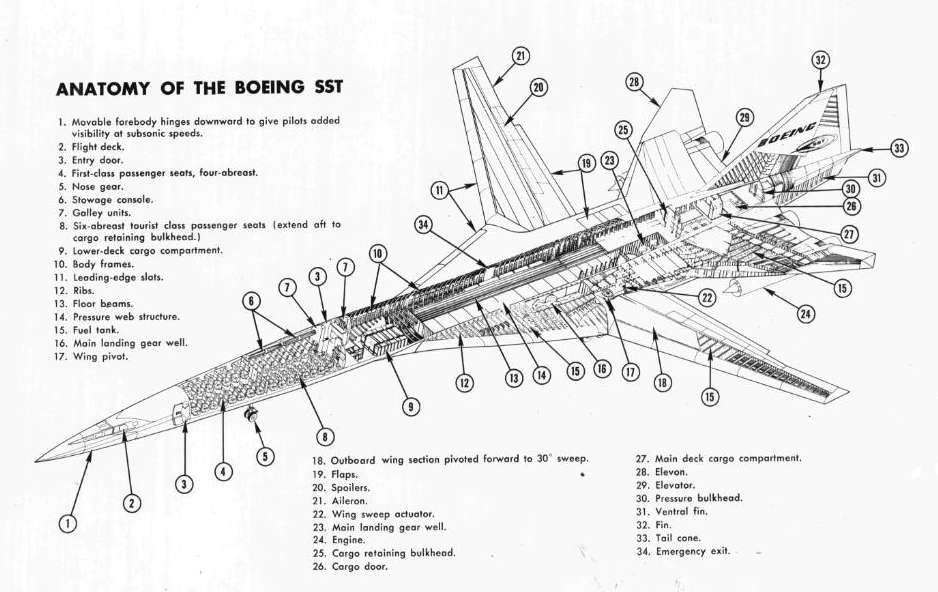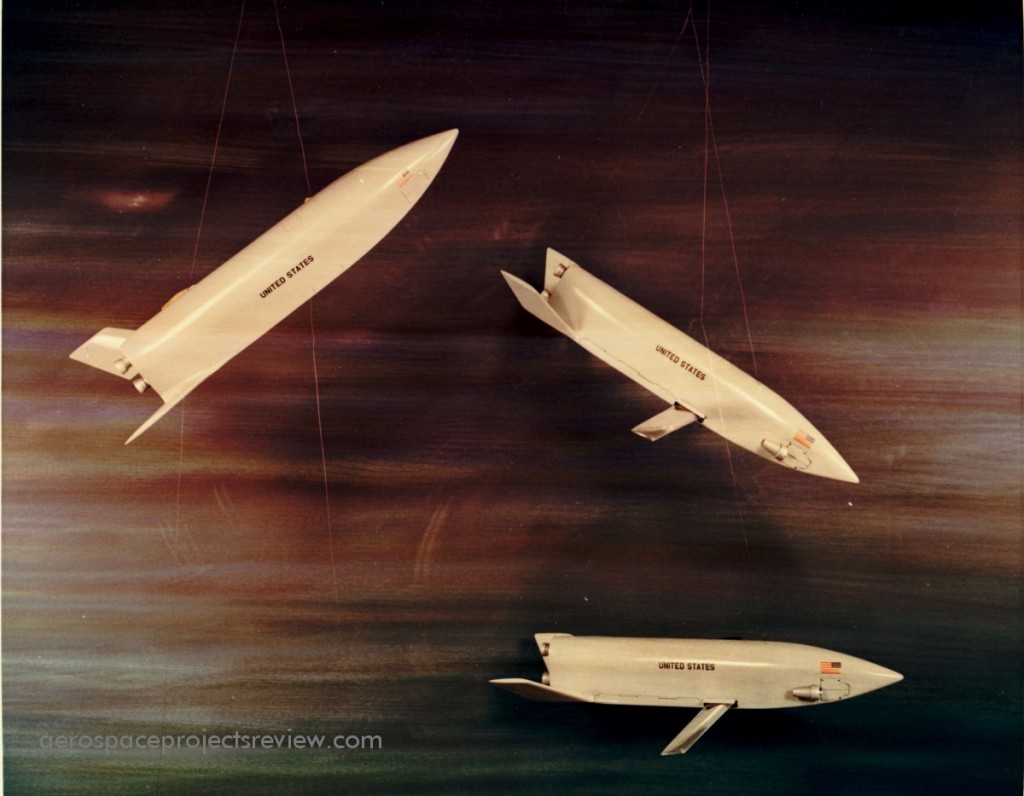Ready to be 3-D printed:
While work on the LK CAD model continues, a bit of a break in the process has allowed me to jam completion of the Tremulis Zero Fighter CAD model into the schedule. This will be a 1/48 scale kit from Fantastic Plastic, and will stand about 16.9 inches tall. Shown below are some renders with the Hydra Parasit (also 1/48) for scale.
As should be obvious, one of my jobs is that of “model maker.” This is a job title that I suspect is not long for this world; more and more it’s going to 3D CAD & 3D printing. Additionally, American craftsmen in areas such as this simply cannot charge the cheap prices that the Asian “genuine Philippine mahogany” sweatshop/slave labor firms do. So to compete, we’ve got to be *better* than the Asian crap and/or often touch on more obscure topics. I try to do both.
Ebay is a source for a lot of the cheap Asian models. I check in from time to time to see what thing they’re cranking out now. I saw a Project Orion model listed… and I gotta laugh:
Wow. That’s just so wrong on so many levels.
A mix of Alclad clearcoat and gold dye from a specialist auto paint shop applied over the Alclad chrome (on the left side of the fuselage from the canopy through the central fuselage section) seems to just about do the trick:
It’s still not perfect, but some tinkering both with the chrome undercoat (as previously mentioned, it was pretty slapdash) and the yellow/red/gold dye, should dial it in. This would finally allow me to make a large-scale Project Pluto model that would really look right. Ummm… anyone want one?
For several years I’ve been looking for a cost effective way to “gold plate” display models without actually plating them in gold. I know it’s possible…. cheap plastic toys are often “gold plated” by way of vapor-depositing aluminum on them, then putting a yellow-tinted clearcoat over that. The results can be quite successful. For example:
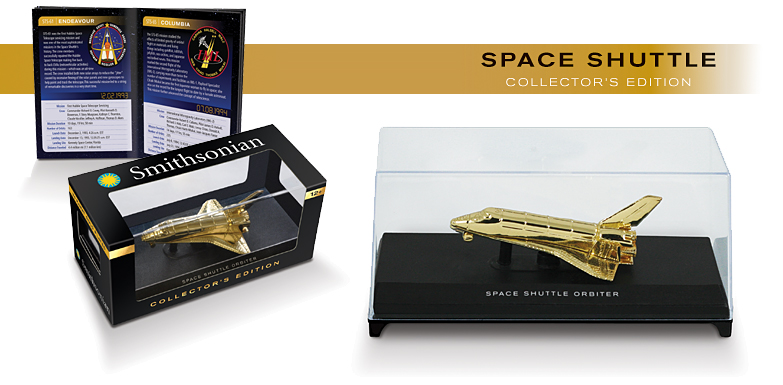
Aluminum plating these things is cost effective because it’s done on an industrial scale. Getting it done on an individual part scale? Meh.
I’ve tried every “gold paint” that I can find, and not a one of ’em actually looks like gold. The best of them looks like… gold paint. So, yellow-clear-coating “chrome” seems about the only way to go.
The closest you can come to “chrome” without actual metal plating is one of a few specialty paints. I’ve heard good things about “Spaz Stix Ultimate Mirror Chrome,” but have not tried it.
One thing I have used with some notable success is Alclad II Chrome in an airbrush. Applied properly, it’s not quite an actual mirror surface, but it looks pretty damned good. So, I decided to try yellow-clear-coating Alclad Chrome to see what I get.
First up… I took a 1/24 Dyna Soar display model and chromed it. This was a model built from all the parts that stink… the original body mold was seriously flawed (and has been replaced with a mold that’s great, producing awesome castings), and the smaller parts were early castings that were munged up in various and sundry way. It was assembled as a fit check, and to be used in sizing things like the display stand and the packaging. Since it is and always will be a serious mess, I didn’t go overboard in surface prep. When using Alclad Chrome, proper surface prep is vital, but this was just a test… and on the whole the results looked pretty good anyway:
I then oversprayed part of that with Alclad clear yellow. The results:
Well, it’s better than gold paint, but it’s still far from being mistaken for actual gold. The yellow seemed to dull the chrome… I wonder if the yellow ate into the chrome and fuzzed it out some. perhaps yellow dye (food coloring?) in something like nitrocellulose lacquer might do the trick…
In any event, I liked the chrome enough that I think I might make me a chrome Dyna Soar one of these days. I’ll be the only kid on my block with one.
——
———–
The original run of “Jonny Quest” was well before my time, but due to the magic of reruns, I discovered it’s childlike 1960’s awesomeness early on. And I’ve found that ever successor version of “Jonny Quest” has stunk on ice in comparison.
Someone with way too much time on their hands decided to pay tribute to the series by re-creating the opening sequence… stop-motion style. And if you like it and want to see a *whole* episode done this way, they’ve set up a Kickstart funding project for you to put your money where your geeky, geeky mouth is.
From an ebay auction, a 1966 Boeing cutaway drawing of the early swing-wing version of the 2707 SST. While the wing would have made low speed flight, in particular takeoffs and landings, more efficient and comfortable, the technology of the time would have made the wing pivot and associated systems simply too heavy and complex for a commercial system such as this. Thus the final 2707-300 SST did away with the variable geometry wing.
But damn if it wasn’t sexy.
Photo of display models (from this auction)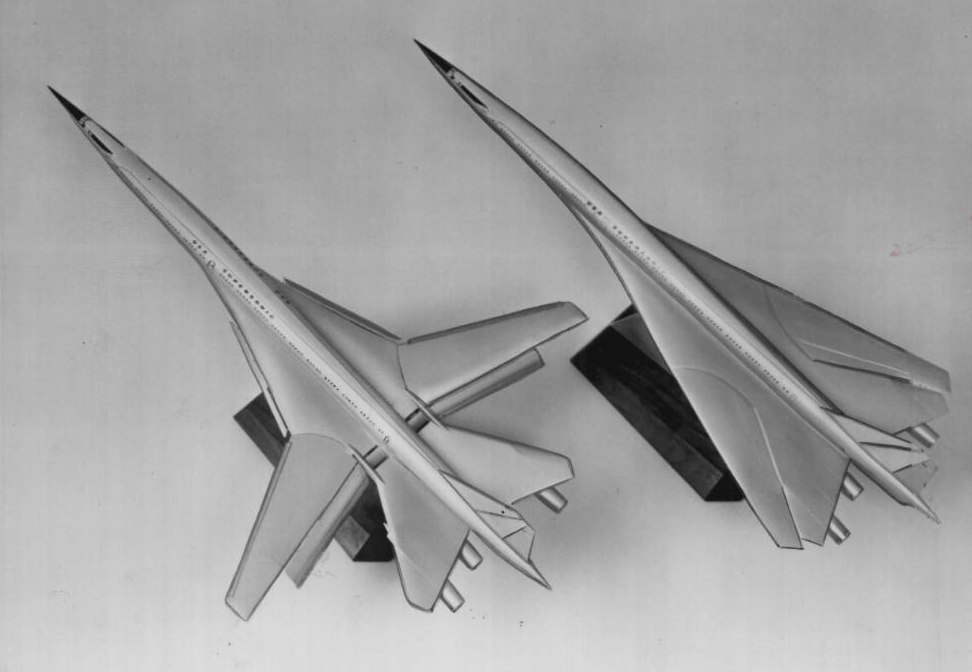
From slides at the NASA HQ archive, two photos of a Convair “Triamese” space shuttle concept. See HERE for more on the Triamese.
